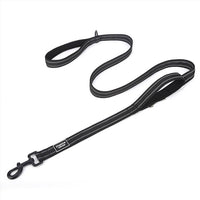How did dogs arrive in the Americas?

Where the heck did dogs come from? Okay, okay. We know that dogs’ roots are with wild wolves, but how did these fur babies make their way to the Americas? We’re talking that far back. So again, where the heck did the dogs come from?
To be frank, this is a question that never crossed our minds until researchers at the University at Buffalo landed on a profound piece of evidence that holds the clues of where our fur baby companions came from.
A bone fragment was discovered in Southeast Alaska which is reported to have belonged to a dog in that region approximately 10,150 years ago. It’s reported as the femur of a dog and is the only known, oldest confirmed specimen of a domesticated dog.
But researchers weren’t out for this information. Originally, according to evolutionary biologist and University at Buffalo’s Charlotte Lindqvist, their focus was on how “Ice Age climatic changes impacted animals' survival and movements in this region”.
The femur came into play as they were sequencing DNA from hundreds of animal bones for their research. At first, the dog femur in question was thought to be that of a bear, but upon further inspection, the discovery of canine origins piqued their curiosity.
From Science Daily in Lindqvist’s words:
With the Southeast Alaskan dog femur, the researchers were able to support their claim that “the first human and dog migration occurred through the Northwest Pacific coastal route instead of the central continental corridor, which is thought to have become viable only about 13,000 years ago”, according to University at Buffalo PhD student Flavio Augusto da Silva Coelho.
That isn’t to say that the Northwest Pacific coastal route is the only possible route or point of entry into the Americas. Researchers report that canines arrived in the Americas at different times which opens up the possibilities of additional entry points for these four-legged companions.
We look forward to hearing more from these researchers as they continue their studies!
This is just a sampling of tips and informational posts we offer at Joyride Harness. You can find more content including tips and tricks and how-tos for caring for your dog on our blog in this section.























